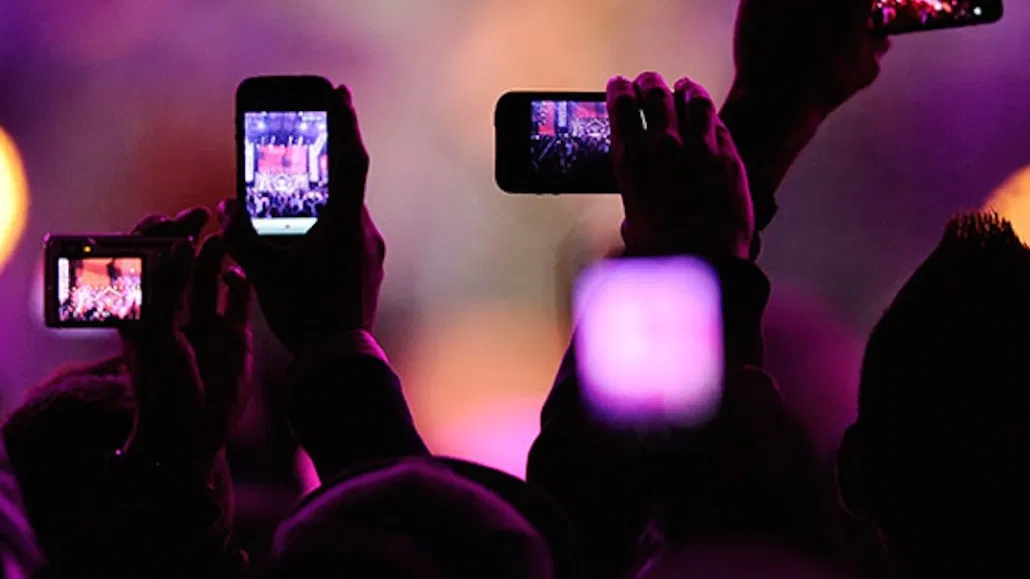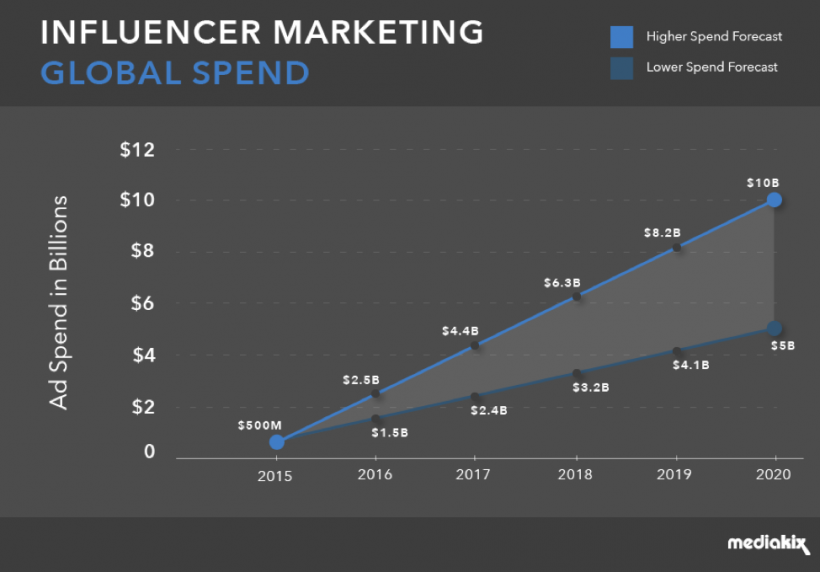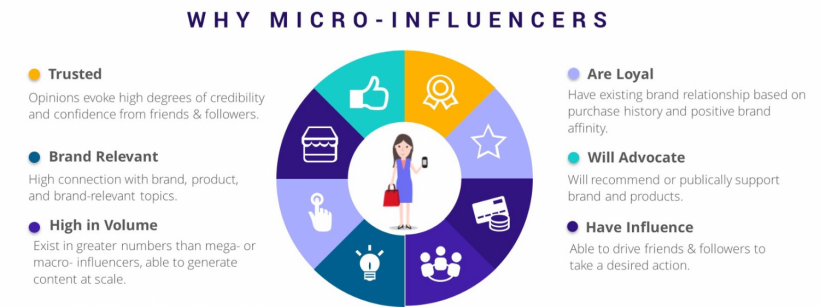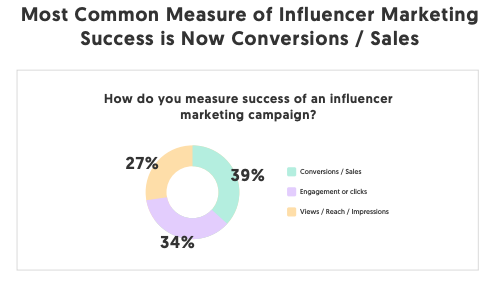
We're well and truly living in the age of the influencer. As our access to different forms of media and social interaction continues to broaden, so too does our sense of connection with the people we see making waves online.
While 2020 has shaped up to be a year to forget for many, it has also seen huge evolutions in the way influencers are interacting with their followers - some carrying positive consequences and others less so.
Let's take a deeper look into the ever-expanding world of the influencer and check out the biggest emerging trends that we've observed this year so far:
1. The End of The Cult of Celebrity
Amazingly, 2020 has seen our obsession with celebrity endorsements begin to unravel. Celebrity efforts to engage with followers during widespread Coronavirus lockdowns appeared to grate on users.

With large-scale sing-a-long covers of John Lennon's Imagine striking the wrong chord with social media users, and clips of some celebrities clapping healthcare workers from secluded balconies, there's some evidence that people are wising up to the content they're seeing.
Evidence of fatigue over celebrity influencers was mounting following the marketing disaster of Fyre Festival and its $250,000 payouts to figures like Kendall Jenner in return for promotion.

With global influencer spending from marketers reaching an all-time high of over $10 billion in 2020, businesses are beginning to wise up to the sorts of faces they want to be attached to their brands.
There's an emerging trend of confusion that meets marketing campaigns like that of Khloe Kardashian and Febreeze's partnership at the beginning of the year, with more users craving more 'authentic' influencers.
2020 appears to have brought to light the clear gaps in social and financial equality that distorts the message that celebrities send to followers when endorsing products. This has led to more success being enjoyed among 'micro-influencers' within more nuanced social channels, like Instagram, TikTok and Twitch. Because these influencers can be younger and more informal within newer social networks, their message can feel more authentic.

Another driving force of this emerging trend is that 'micro-influencers are typically cheaper to recruit - helping to ease marketing budgets for businesses. As the year progresses, we can expect to see more of these 'authentic' influencers promoting products and services in a more hands-on manner than their celebrity counterparts.
2. The Search for Authenticity Driving Deeper Connections With Followers
The hunt for authenticity has prompted more influencers to take a step back from the pursuit of pictorial perfection on social channels in favour of invoking a wider sense of realism in their content.
One of the biggest challenges influencers face is engaging with followers when more social networks are emerging each year causing audiences to spend less time on single channels. However, with fewer crowds to sift through, this has helped influencers to forge valuable connections with their more loyal followers - helping to pave the way for more value-driven content and personable posts.
Speaking to Later, Instagram-based influencer, Rohini Mauk said "I think providing some type of content that shows your real-life personality is key to growing online these days. Audiences are craving people they can connect with and I see 2020 as the year where people start (or continue) to share a real glimpse into their life." "People are starting to see through the perfection found online."
To connect better with audiences, Mauk believes great ways for influencers to build bonds with followers can be by inviting Q&A sessions, creating YouTube videos, sharing memes and opening up on the not-so-glamorous side of life.
3. Sustainability is Key For Building Value-Based Rapports
Some influencer trends can be forged in the interest of building exposure and maximising profit margins for content - and there's nothing wrong with that when done in an honest manner that doesn't mislead followers. However, other trends can be wholly positive for the influencer, followers, and the ecosystem as a whole.
Increasingly, the purchasing decisions from social media users are being influenced by their respective values. Whether these issues focus on the environment, society or inclusivity, there is an increasing number of online audiences who are willing to pay more in order to buy goods from brands that clearly display a conscience.
This represents an opportunity for influencers to build their own profiles by embracing their like minded environmental and societal values in order to spread their message and reach new audiences who also care about the same issues.
Whether an influencer becomes a representative of an environmentally friendly company, or simply champions equal rights causes online, in 2020 it's an effective way of reaching new audiences and inspiring followers in equal measure.
4. Partnerships Are Becoming More Long Lasting
Just as Instagram had taken the controversial move of getting rid of like counters on partnership posts, there's a wider shift among businesses changing up the pursuit of awareness in favour of building long-lasting partnerships to encourage sustained sales. In a combined report by CreatorIQ and the Influencer Marketing Hub, the most common measurement for determining a successful influencer campaign now boils down to conversions.

As the chart above illustrates, more businesses want influencers to help them actually sell products, as opposed to simply providing them with exposure. With business in the age of Coronavirus more dependent than ever on successfully reaching people, the ROI on influencer campaigns are increasingly being looked upon differently. Today, brands see profile visits as sharing more similarities with website traffic, and follows akin to newsletter signups. Story highlights on Instagram are relative to views of a company blog, and it's the job of influencers to ensure that their partnerships create a more shoppable environment for visitors.
As a result, in 2020 we're seeing fewer one-off campaigns with greater emphasis on leveraging long-term partnerships between influencers and companies. With the typical Instagram story viewed only by 5% of the total audience of an influencer, and average swipe-up rates hovering around 1% - it's become especially clear that influencer marketing needs to be more of a numbers game in order to work for everybody involved.
Partnerships that span months and years are also significantly more likely to resonate with audiences. One-off campaigns have become more repelling to audiences that are wising up to empty online advertising campaigns run by influencers. But in the case of longer running partnerships, each collaborative post will appear increasingly like an organic endorsement.
5. New Avenues to Reach Audiences Still Continue to Appear
2020 has seen countless new platforms and Instagram tools have already entered the social landscape, providing influencers with more opportunities than ever to showcase their creative sharing power among followers.
The most notable arrival in the year so far came with TikTok's meteoric rise to popularity as COVID-19 enforced global lockdowns and social media users took to creating videos to pass the time at home.
Although it's been around for three years, TikTok - much like Zoom's video conferencing options - it's taken a prolonged period of individuals living their lives at home without direct contact with the outside world in order to endorse the app in high volumes.
Influencer Nichole Ciotti predicted the rise of TikTok back at the end of 2019, claiming: "The natural virality their interface affords is going to enable brands to multiply their marketing efforts for the same dollars, especially with micro influencers who produce amazing content, which has a high potential to get picked up by TikTok's algorithm and go viral."
Alongside apps like TikTok, 2020 has seen a steady rise in specialist social media channels like the right-wing, Donal Trump endorsed Parler, to apolitical apps like MeWe, all the way through to Cake - a social network that's designed to enable users to closely follow the topics that interest them the most.
The arrival of social networks that carefully cater to the interests of users may lead to an uneasy echo-chamber effect, but it can also present micro-influencers with the opportunity to create more refined, tailor suited content to like minded users - which could help to resonate with followers and build more trust with audiences.
6. Videos Remain The Most Valuable Way of Reaching Audiences
If the all-encompassing rise of TikTok wasn't proof enough that short videos remain the gold standard for influencers wishing to connect with followers, the fact that Instagram, Facebook, YouTube and WeChat are continuing to invest heavily in the format should be.
Videos are a virtually irreplaceable way for influencers to connect with audiences and display some level of authenticity that's harder to replicate in images and text. Through starting challenges on TikTok or creating beauty or lifestyle how-tos on IGTV, the format allows users to form a stronger bond with viewers and engage with them in a deeper way.
Influencers are swiftly learning that showing that they're approachable and personable is an effective way of building trust among followers. By engaging in Q&As, sharing tips, and offering step-by-step advice, influencers can not only show followers that they care about them, but also directly communicate with them by reading their comments, answering their questions and taking their suggestions on board.
Additionally, videos are still the best way to get noticed online. Instagram's IGTV videos appear four-times larger than photos in the platform's explore tab - literally enhancing levels of exposure for video-based influencers. Short video formats also suit a wide range of influencers, from wellness experts, to industry professionals and lifestyle bloggers.
7. Responsible Endorsements Prompted by Guideline Reviews
Sadly, influencer marketing doesn't always consist of innocent endorsements. The lines can often be blurred between organic and sponsored content, and advertisers often work hard to locate influencers who'll be willing to pass off affiliate posts as if they were entirely natural.
Recently, worrying trends on new social site, TikTok, have emerged where videos of users whitening their teeth with bleach have been seen a total of 12 million times. The promotion of the unsafe whitening products has prompted dentists to scramble together responses highlighting the dangers of using bleach in such a way and even left them pointing to safe alternatives like whitening strips and toothpaste in a bid to discourage users on the social media site.
The rise of disinformation on social media is likely to increase as spending continues to rise from businesses. However, federal regulators have begun to act to help restore levels of safety and security for users online.
In the US, the Federal Trade Commission has called for a review of its endorsement guidelines, taking into account a new Facebook policy that allows advertisers to pay in order to promote 'organic' influencer posts of Instagram as a particular cause for concern.
The regulator has been busy sending warning letters to assorted influencers but intends to nip the problem in the bud with advertisers. Commissioner, Rohit Chopra clarifies: "When individual influencers are able to post about their interests to earn extra money on the side, this is not a cause for major concern. But when companies launder advertising by paying someone for a seemingly authentic endorsement or review, this is illegal payola."
One issue is that advertisers don't necessarily have to directly adhere to guidelines when looking for influencers to promote their products, however, some existing guidelines could soon be reappropriated as formal rules - leaving advertisers facing civil penalties should they be found to be breaking them.
There are also plans from the FTC to create a set of requirements for platforms, as well as requirements for influencer contracts. Furthermore, children's privacy and safety policies could also come into review moving forward.
Global efforts to stem the flow of misinformation throughout social media will certainly be a huge talking point as 2020 moves on. Especially in the face of rising levels of fake news regarding COVID-19 and the US presidential election entering the social landscape. As more influencers search for a platform to show their authenticity, we may see more users flock to networks that appear to be more trustworthy in the coming months.
* This is a contributed article and this content does not necessarily represent the views of techtimes.com








